
Safari in February
February
is an unusual month for safari,
but there are some really interesting options

the remarkable migration calving spectacle in Serengeti
February is generally considered to be a very good time to visit Tanzania.
The weather in most parts of the country is usually very good, a significant lull between the short rains of November and the long rains of Mar-May.
Daytime temperatures should reach 30-35C/86-95F in most areas.
Down on the coast rain is likely to remain a more or less daily occurrence, it should largely take the form of light showers. Further inland showers should be more occasional.
The overriding conditions should be hot and sunny, with clean and clear air and great light for photography.
On safari, the short rains should have passed, freshening the landscapes and causing many mammal species to start to have their young. If rains have been heavy then many of the animals will have dispersed into the hinterlands, making wildlife viewing generally less intense. So a pleasant and pretty time to be out in the bush, but without the hardcore intensity of the late Aug-Oct dry season.
The one major exception to this is the calving of the wildebeest on the southern plains of Serengeti, an all action spectacle which draws well-informed travellers from around the world. Almost all trips at this time are shaped around this event.
Conditions on Kilimanjaro should be superb, this probably the best month of the year to be on the mountain.
Visitor traffic in February is medium. This is a reasonably popular period and traffic in the core areas of Serengeti Southwest and Zanzibar does need to be considered. Getting availability in the best lodges can be a real issue and booking at least six to eight months ahead is advised, especially for groups of four or more guests and especially in that Serengeti Southwest area.
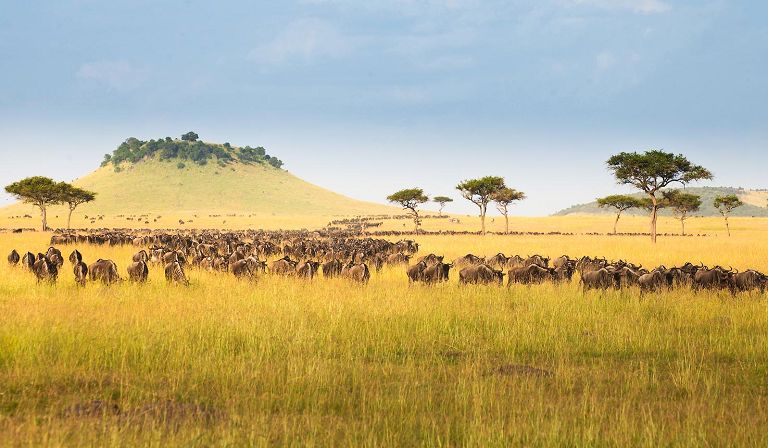
cooler conditions, but relatively busy
February is generally considered to be a very good time to visit Egypt.
At this time of year, the temperatures are at a comfortable 25C (77F), with rainfall down at 0mm (0”) and sunshine hours up at 10 hours per day, despite the shorter day length.
Temperatures at night can drop as low as 7C (44F).
If anything, the weather can be a little on the cool side, with the potential for some overcast skies.
Visitor numbers are relatively high through the month, creating an urgent need for early booking and traffic avoidance measures.
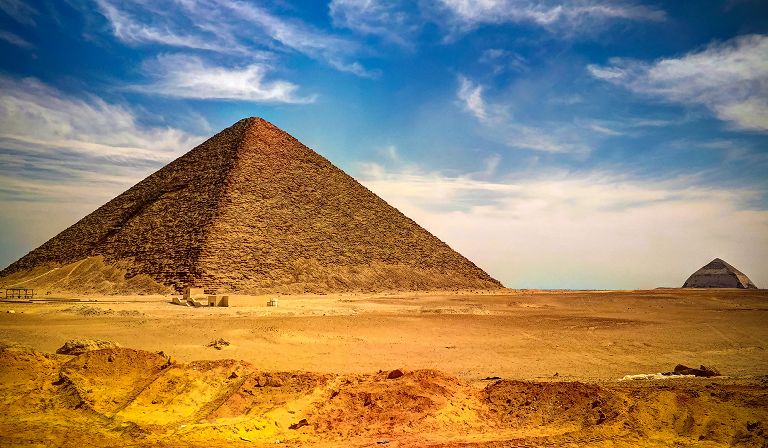
a mild sandwich, with a warm filling
February is the fourth month of the southern summer and is generally considered to be a very good month to visit Chile.
In the capital, Santiago, and the nearby winelands, temperatures are up at a balmy 30C (86F), whilst rainfall is down at 2mm (0”) over the month.
In the Atacama area to the far north, temperatures are up at a respectable 17C (62F), whilst rainfall is up at 30mm (1”) over the month.
In the Torres del Paine area to the far south, temperatures are up at a relatively high 16C (60F), with rainfall steady year-round at 25mm (1”) over the month. The high altitude hiking trails should be open more frequently.
Visitor traffic will now be high, necessitating the need for early booking and traffic avoidance measures.
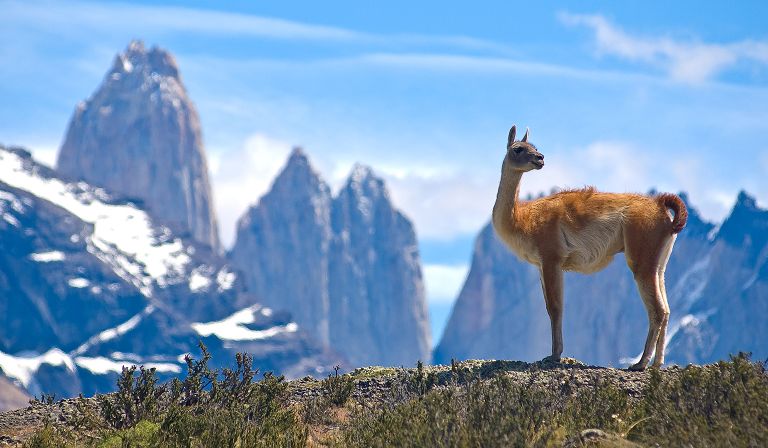
great conditions in almost all areas
February is generally considered to be a very good time of year to visit Ethiopia.
Most areas have a similar climate to the capital, Addis Ababa, with temperatures around 25C (77F) and rainfall down at 25mm (1”) for the month.
The Tissisat Falls on the Blue Nile at Bahir Dar are at their best during the high water period of Jul-Dec and can be running rather low by February.
The Danakil Depression is the hottest place on earth, so conditions are never easy down there. November is one of the better months, when daytime temperatures usually ceiling around the 40C/104F mark.
The remote Gambela area is accessible at this time, where the kob migration should be arriving from South Sudan.
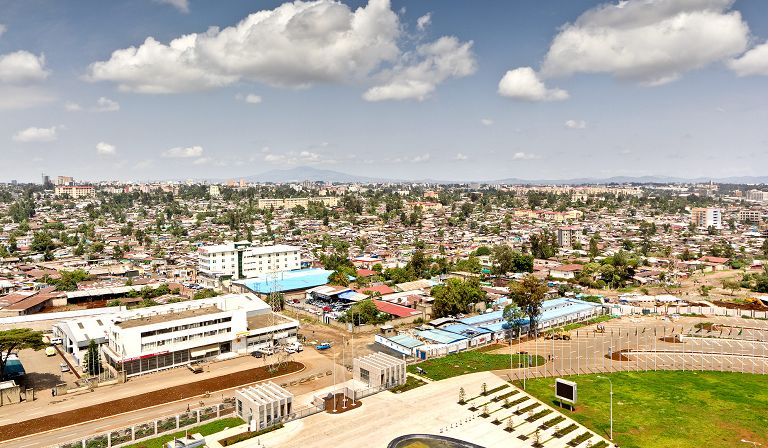
still strong for weather and wildlife
The month of February represents late summer on the Antarctic Peninsula, when the region continues to enjoy the most reliable weather. Of course, this is Antarctica and conditions are likely to remain relatively harsh, but for the local wildlife, this is balmy.
By now the snow cover is likely to have receded, leaving large areas of rocky foreshore, which does make the place look rather less pristine, but makes life much easier for getting around. The sea-ice should also have retreated to the maximum extent. Skies are often clear, with lots of sunshine.
Towards the end of the month, there can be signs of the return of winter.
Average temperatures in this part of the world tend not to vary enormously throughout the year, with February being around 2C (36F), peaking some days up to 15C (59F). Precipitation rises to around 40% above the January low, at around 75 mm (3”) per month. Perhaps most importantly, the day length is now shortening fast, but remains up at around 16 hours.
The reliable weather means that landing sites tend to be accessible and itineraries are less likely to have to shift around to accommodate the conditions. A ship with a higher ice-class rating tends to be less important now, unless you are intending to push deep into the Weddell Sea to the east or head to the far southwest, beyond the Antarctic Circle.
In terms of wildlife, the penguin colonies should still be busy, but now with chicks starting to fledge and learn to swim, whilst trying to avoid the attention of hungry leopard seals. With the chicks now being large enough to defend themselves from skuas, both parents head out to fish, in a rush to get the chicks off the ice before winter returns.
With most other bird chicks now fledging, the skies should become a lot more busy.
Fur seals and young male elephant seals should be seen in good numbers.
Humpback whale and minke whale sightings should also be at their best along the western flank of the peninsula, with all the migrating pods having now arrived and trying to make the most of the late-season krill blooms. The whales tend to become more relaxed and inquisitive as they satiate their enormous appetites, particularly the youngsters. There are also chances of watching pods of killer whales as they hunt for seals and penguins.
When it comes to activities, this time of year remains good for kayaking amongst the breaking ice sheets. Camping can also be really good, but walking on sea ice, snow-shoeing and skiing all tend to be less of an option.
With the sea-ice in full retreat, this is a popular time to head south towards the Antarctic Circle.
For booking trips, we are now in the main season for this part of the world, so there should be plenty of choice of ships and itineraries, but availability can be very difficult and, as always, booking 1-2 years ahead is recommended. Prices are at their highest (around 25% above shoulder season) and discounts are rare.
Air-cruises are possible throughout the early part of February, but the airstrip on King George Island in South Shetland typically closes towards the end of the month.
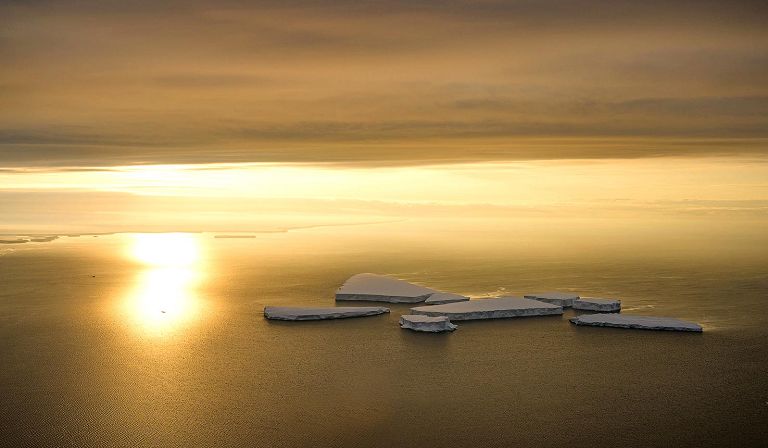
a pleasantly warm month
February is the fourth month of the cool dry season and is generally considered to be a very good month to visit most parts of India.
In Delhi (which is representative of Rajasthan, Madhya Pradesh and most inland areas), temperatures have climbed sharply to a pleasant 25C (77F), with rainfall remaining down at 25mm (1”) for the month. This is a good time for general travel and also reasonably good for tiger safari.
In Goa (which is representative of the tropical coastal areas), temperatures remain up at an uncomfortable 32C (90F), but with rainfall down at 5mm (0”) for the month.
In Ladakh (which is representative of areas up in the Himalayas), temperatures climb slightly to 0C (32F) and with rainfall down at 5mm (0”) for the month. These conditions are a little challenging for general travel, but this is the main season for snow leopards.
Visitor numbers are relatively high, necessitating early booking and traffic avoidance measures.
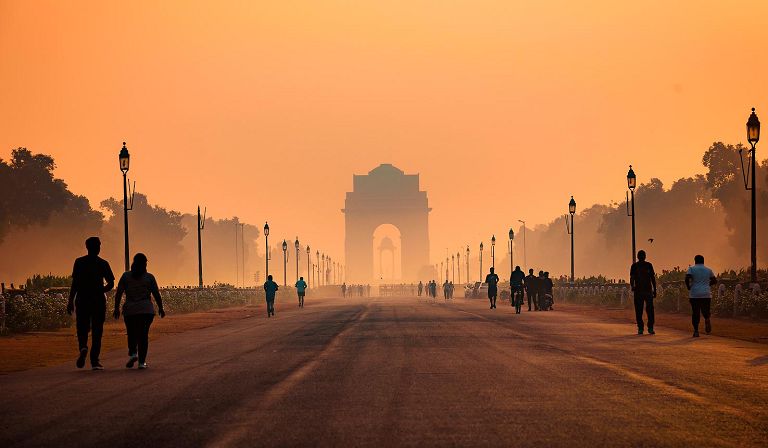
green season wildflowers and baby animals
Despite February being the middle of the green season in southern Africa, Botswana experiences much lower rainfall than in surrounding countries, safari remains very much operational.
The wildlife viewing remains relatively strong in the core Okavango Delta areas and the bush is verdant, with lots of wildflowers and baby animals.
On the open grasslands of the Makgadikgadi area, large herds of wildebeest and zebras should be congregating to have their young.
The temperatures can still be a little warm and sticky, with some chance of showers, but still with plenty of sunshine.
The normally very high prices are substantially reduced, making this a relatively smart time to visit.
The Cape (Cape Town, Whale Coast, Cape Winelands) has a converse seasonality to the rest of sub-Saharan Africa. It is summer at this time, making it the perfect complement to a Botswana safari.
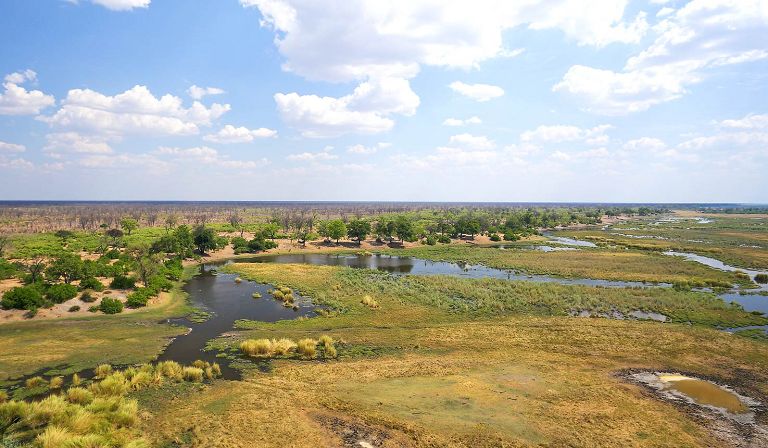
far better in the north than the south
January is generally considered to be a pretty good month to visit Kenya.
Although the more southerly reserves are continuing to experience the short rains, the north of the country and the tropical coast are both much drier.
In the Maasai Mara, February is the fourth month of the green season. Temperatures should be a pleasant 28C/82F, but rainfall increases to around 100mm/4″ for the month. The main migration herds have long since departed for the south. However, there should also be strong general wildlife viewing, with plenty of predator action. Most people choose to head to the Serengeti (in Tanzania) at this time, where the migration calving is underway.
In the northern areas of Laikipia, Samburu and Mathews Range, conditions are likely to be considerably better. Temperatures should still be comfortable, but rainfall should drop further to around 15mm (0.5”) for the month. Wildlife is likely to remain dispersed, but increasingly accessible thanks to the drier backtracks.
Conditions are now good down on the tropical coast, where temperatures are still up at a potentially uncomfortable 34C/93F, but with rainfall right down at 15mm/0.5″ for the month.
Visitor numbers in February are usually relatively low, which goes a long way to offset the other disadvantages and makes this a potentially attractive time to explore usually more busy areas.
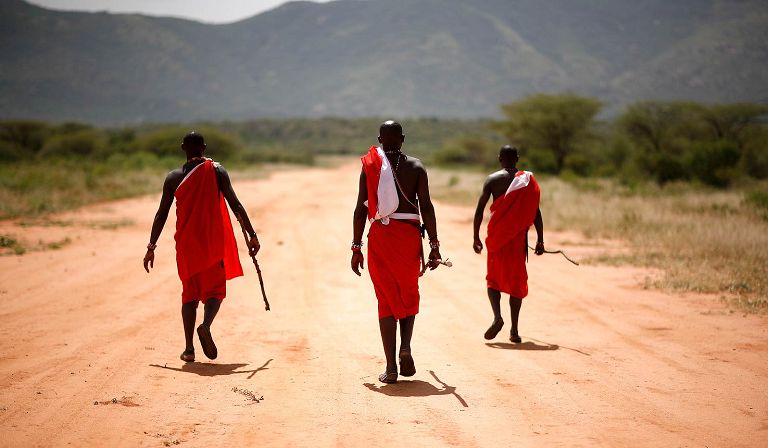
good conditions in almost all areas, especially Kidepo
February is generally considered to be a pretty good month to visit Uganda.
In the Bwindi Forest area, the temperatures are stable at around 22C (70F), but rainfall is stable around 75mm (3”) through the month.
This rainfall is slightly lower than the annual average and conditions for gorilla tracking should be reasonably good.
In the savanna safari areas at this time, Queen Elizabeth and Murchison Falls share similar conditions to the above and the dry season should be having a significant positive effect on wildlife viewing.
Kidepo Valley is in the sixth and final month of its dry season, with conditions now at their best.
Visitor traffic tends to be medium in February (boosted by guests combining with the migration calving event in the Serengeti area of Tanzania). It is always good to book permits as early as possible, to get on the best gorilla families.
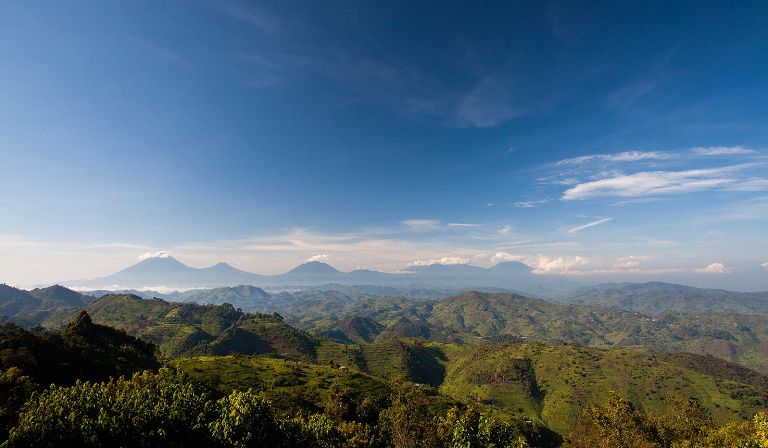
late summer in Patagonia
February is the latter part of the southern summer and is generally considered to be a very good month for visiting Argentina, especially in areas further south.
Down in the south, this is a great time of year to visit Patagonia. Although the weather here is always unpredictable, conditions are relatively mild and good for outdoor activities like touring, motorboating, kayaking, hiking, horse-riding and puma tracking. Temperatures are up around 20C (68F) and rainfall down at 10mm (0.5”) for the month.
In central areas such as Bariloche, conditions are perfect for summer activities like touring, hiking, kayaking and motorboating. Temperatures remain up around 24C (75F) and rainfall increases slightly to 15mm (0.5”) for the month.
Out on the coast, Península Valdés is good at this time, with lots of migratory marine animals around. However, January does fall between the two orca hunting seasons. Temperatures are up around 21C (70F) and rainfall down at 25mm (1”) for the month.
In the northwest of the country, private-guided overland expeditions into the high Andes are excellent at this time. Conditions in the dramatic high altitude areas are mild. There can be considerable rain at lower altitudes, but this tends to be less of a concern. Temperatures in Salta are dropping slightly to 28C (82F) and rainfall is still up at 175mm (7”) for the month, but the higher temperatures are a blessing up top, where there is rarely any rain.
Up in the north of the country, the Iguazú Falls area is very hot and rainy. The water volumes on the falls at this time are very high, which can be very impressive in terms of sheer power, but the views can be obstructed by spray and some of the most important trails can be closed for safety reasons.
Temperatures are still up around 33C (91F) and rainfall remains up at 200mm (8”) for the month.
Visitor traffic in February is relatively high in Patagonia, making it necessary to book early and deploy traffic avoidance techniques.
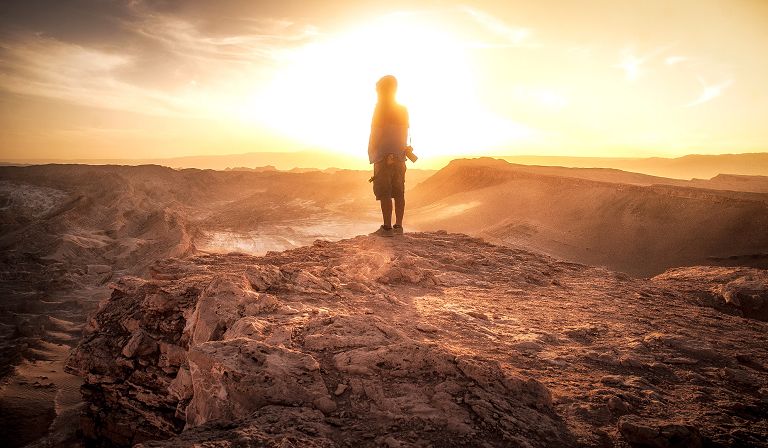
warm and calm conditions
February is generally considered to be a very good month to visit Galapagos.
Temperatures are up at 30C (86F). Rainfall is also up at 75mm (3”) over the month, but occurs almost exclusively at higher altitudes.
Ocean temperatures should be very pleasant for swimming and snorkelling.
Wildlife events include marine iguanas on Isla Santa Cruz starting to nest, flamingos on Isla Floreana starting to nest, black-tailed pintails starting to breed and penguins arriving at Isla Bartolomé.
Visitor traffic is heavily controlled in Galapagos, so we only need to take care to avoid any traffic in the main port areas. Early booking is essential at this time of year.
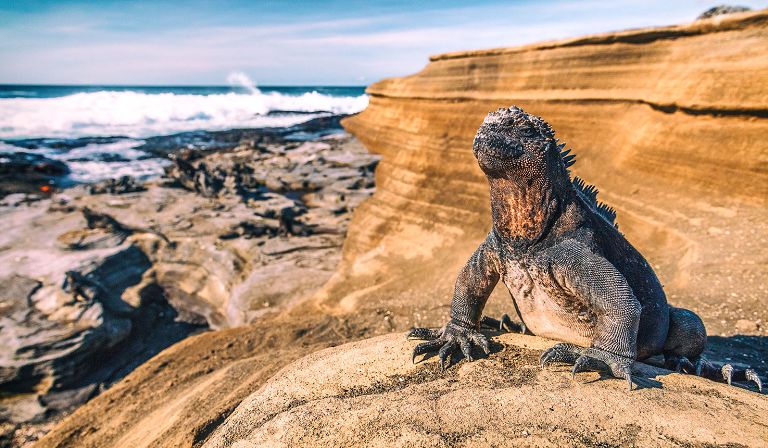
Extraordinary tailor-made adventures,
from earthy and edgy to easy and extravagant
From around USD 2500 per person, you set the ceiling

Get started on your trip
It’s never too soon to get in touch, we are here to help with every stage of your planning.

January
is strongest in north and central Africa, Asia,
the south of South America and Antarctica

February
is strongest in north and central Africa, Asia,
the south of South America and Antarctica

March
is strongest in north and central Africa, Asia,
the south of South America and Antarctica

April
is strongest in north and central Africa, Asia,
the south of South America and Antarctica

May
is strongest in north and central Africa, Asia,
the south of South America and Antarctica

June
is strongest in north and central Africa, Asia,
the south of South America and Antarctica

July
is strongest in north and central Africa, Asia,
the south of South America and Antarctica

August
is strongest in north and central Africa, Asia,
the south of South America and Antarctica

September
is strongest in north and central Africa, Asia,
the south of South America and Antarctica

October
is strongest in north and central Africa, Asia,
the south of South America and Antarctica

November
is strongest in north and central Africa, Asia,
the south of South America and Antarctica

December
is strongest in north and central Africa, Asia,
the south of South America and Antarctica
